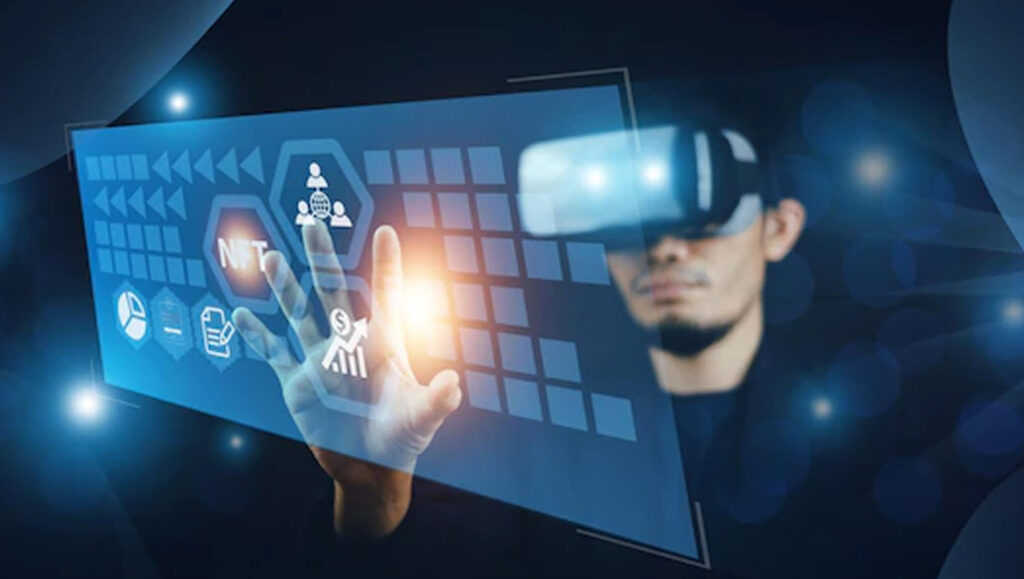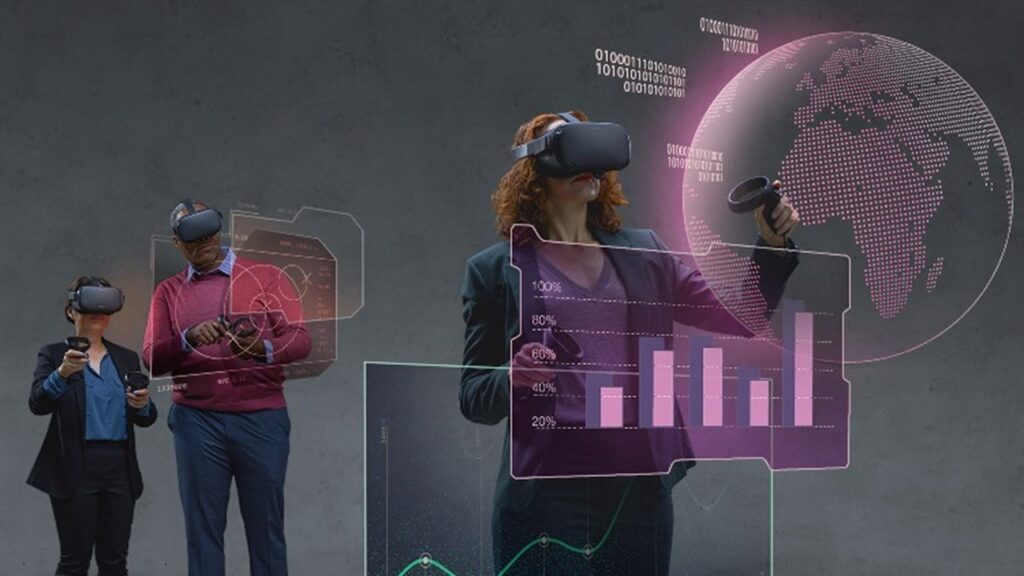While it is often associated with gaming and entertainment, VR has the potential to revolutionise the way businesses conduct analytics. In this blog post, we’ll explore how VR can help with analytics and the benefits it can bring to businesses.
Firstly, let’s define what we mean by analytics. Analytics refers to the process of collecting, analysing, and interpreting data to make informed decisions. In business, analytics is used to gain insights into customer behavior, market trends, and other important factors that impact business operations.

Now, let’s take a look at how VR can enhance the analytics process:
- Immersive Data Visualisation
One of the biggest advantages of VR is its ability to provide immersive data visualization. Instead of viewing charts and graphs on a computer screen, analysts can visualize data in a 3D space. This provides a more interactive and engaging experience, allowing analysts to explore data in new ways.
For example, imagine being able to visualise sales data as a landscape with different peaks and valleys representing different products or regions. With VR, analysts can explore this landscape and identify trends and patterns that may not be immediately apparent in a 2D chart.
- Collaborative Analysis
Another benefit of VR is its ability to facilitate collaborative analysis. Analysts can work together in a virtual space, regardless of their physical location. This allows for real-time collaboration, enabling teams to work more efficiently and effectively.
For example, a team of analysts could use VR to explore data together, sharing insights and ideas as they work. They could also use VR to present their findings to stakeholders, providing a more engaging and immersive experience than a traditional presentation.
- Simulation and Predictive Analytics
VR can also be used for simulation and predictive analytics. By creating virtual environments that simulate real-world scenarios, analysts can test different strategies and predict outcomes. This can be particularly useful in industries such as manufacturing and logistics, where small changes can have a significant impact on operations.
For example, a logistics company could use VR to simulate different scenarios, such as changes in shipping routes or delivery times. They could then use predictive analytics to identify the best strategy and optimize their operations.
- Training and Onboarding
Finally, VR can be used for training and onboarding. By creating virtual environments, businesses can train employees in a safe and controlled environment. This can be particularly useful for industries such as healthcare, where mistakes can have serious consequences.
For example, a hospital could use VR to train surgeons on new procedures or medical devices. They could also use VR to onboard new employees, providing a more engaging and immersive experience than traditional training methods.

In conclusion, VR has the potential to revolutionise the way businesses conduct analytics. By providing immersive data visualisation, facilitating collaborative analysis, enabling simulation and predictive analytics, and enhancing training and onboarding, VR can help businesses gain deeper insights into their operations and make more informed decisions. As the technology continues to evolve, we can expect to see even more innovative use cases for VR in analytics.






